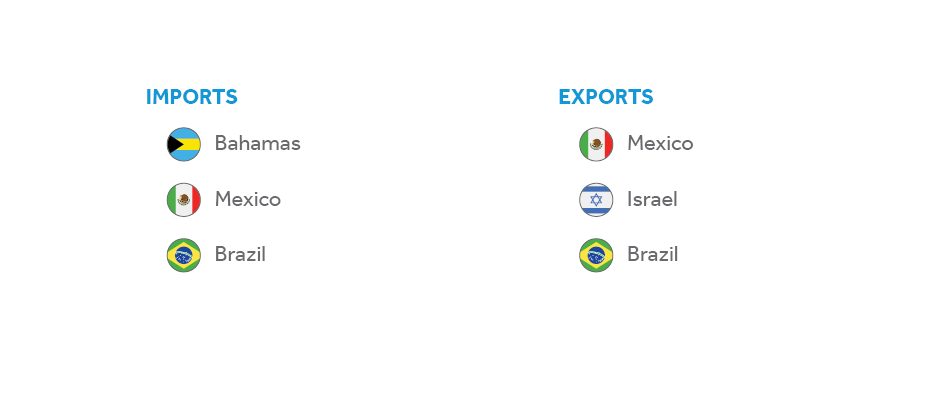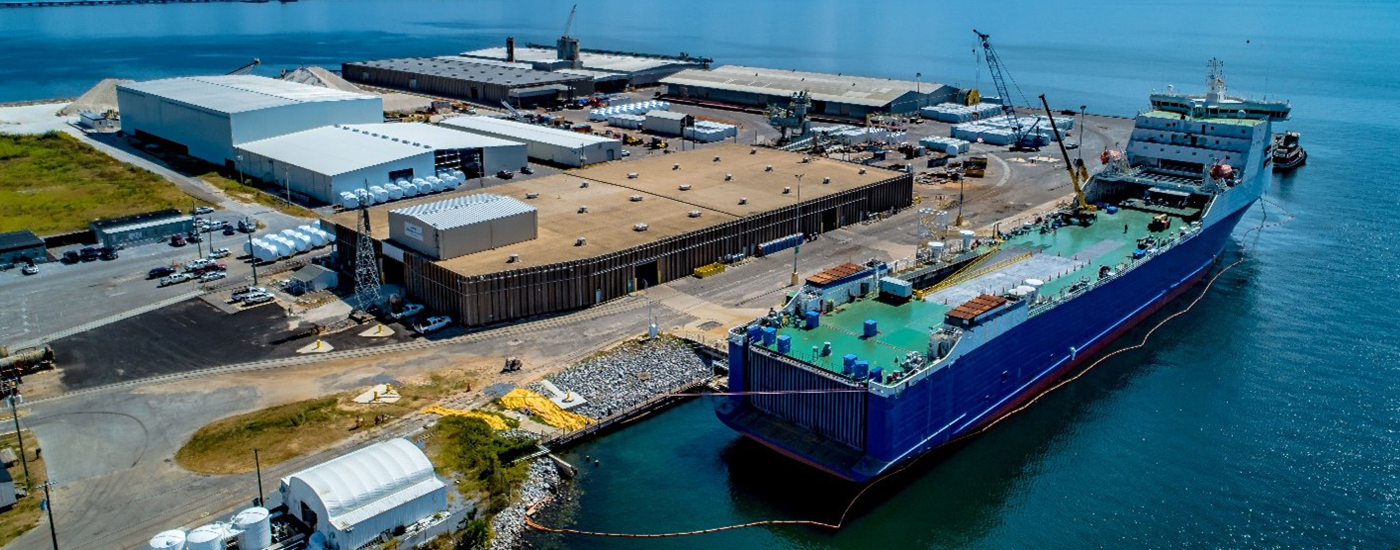With growing complexity in supply chain management, a realignment of infrastructure supporting global trade routes is underway at the Port of Pensacola. Element One focuses on Maritime Operations Modernization and accelerates on-port infrastructure advancements in support of freight investment and waterway improvements to help better align roadways, rail, and infrastructure with market-driven opportunities. These improvements create efficiencies that increase stability in supply chains, leading to faster transit times, allowing for volume increases and new opportunities for the port and its tenants in the Marine Maintenance Repair and Overhaul (MMRO) space, as well as new growth in ocean sciences research and development, boat building, and competitive sailing sectors.
Element Two focuses on the Maritime Center of Excellence and Light Manufacturing Complex and supports the build-out of approximately 10 acres of the northeast quadrant and brings online more than 210,000 sq. ft feet of covered operational and dry storage space supporting existing and new tenants, boat building, ocean sciences and maritime technologies research and development, marine industry training, flexible maker’s space (light manufacturing, fabrication and/or assembly), and a small boat testing facility, in addition to supporting two acres of improved laydown area for large wind energy project cargo.
Element Three focuses on infrastructure improvements to support elements one and two. As tenant cargo, particularly wind energy special project cargo, gets larger and heavier, changes are needed to accommodate efficient truck and rail moves. Burying utilities in support of larger cargo handling and movement, especially for the northern part of the port via the Heavy Load Roadway Project, as well as the construction of internal service roads and additional rail infrastructure, will further modernize port operations.
Supported by our tenant partners, the Port of Pensacola’s supply chain enhancement project collaboratively improves on-port ocean transportation efficiency, supports the creation of more effective logistics patterns, resolves outdated infrastructure, attracts investment, brings 210,000 sq. ft of active warehousing and light manufacturing maker space online, and ultimately increases tonnage and job growth in Northwest Florida.
Goals & Objectives
- American Magic Initiative: Complete repairs to Warehouse #10.
- Hurricane Sally Infrastructure Repair Program: Repair infrastructure damaged by Hurricane Sally, including roads, rail, and water distribution systems.
Current or Planned Investments
- AMERICAN MAGIC COMPLEX AND DOCK COMPLEX BERTH IMPROVEMENTS
Waterside rehabilitation and berth #6 repair project - UPLAND CARGO IMPROVEMENTS
Pavement, warehouse, rail, and landside rehabilitation aimed at improving the efficiency of cargo movement in and out of the port, thereby reducing bottlenecks and easing congestion.
Accomplishments
- Berth #6 Phase I Project
- Ferry Landing
- Economic turnaround of the Port
Hinterland
Southeastern and midwestern U.S. roughly bounded by the Great Lakes to the north, the Mississippi River to the west, the Gulf of Mexico to the south and the Atlantic Ocean to the east including all or a portion of Florida, Alabama, Mississippi, Tennessee, Kentucky, Illinois, Indiana, Ohio, the Virginias, North Carolina, South Carolina and Georgia.
Trade Partners

Mission
To manage and operate cost-effective facilities for marine commerce in order to foster regional and international trade and promote economic development and employment.

